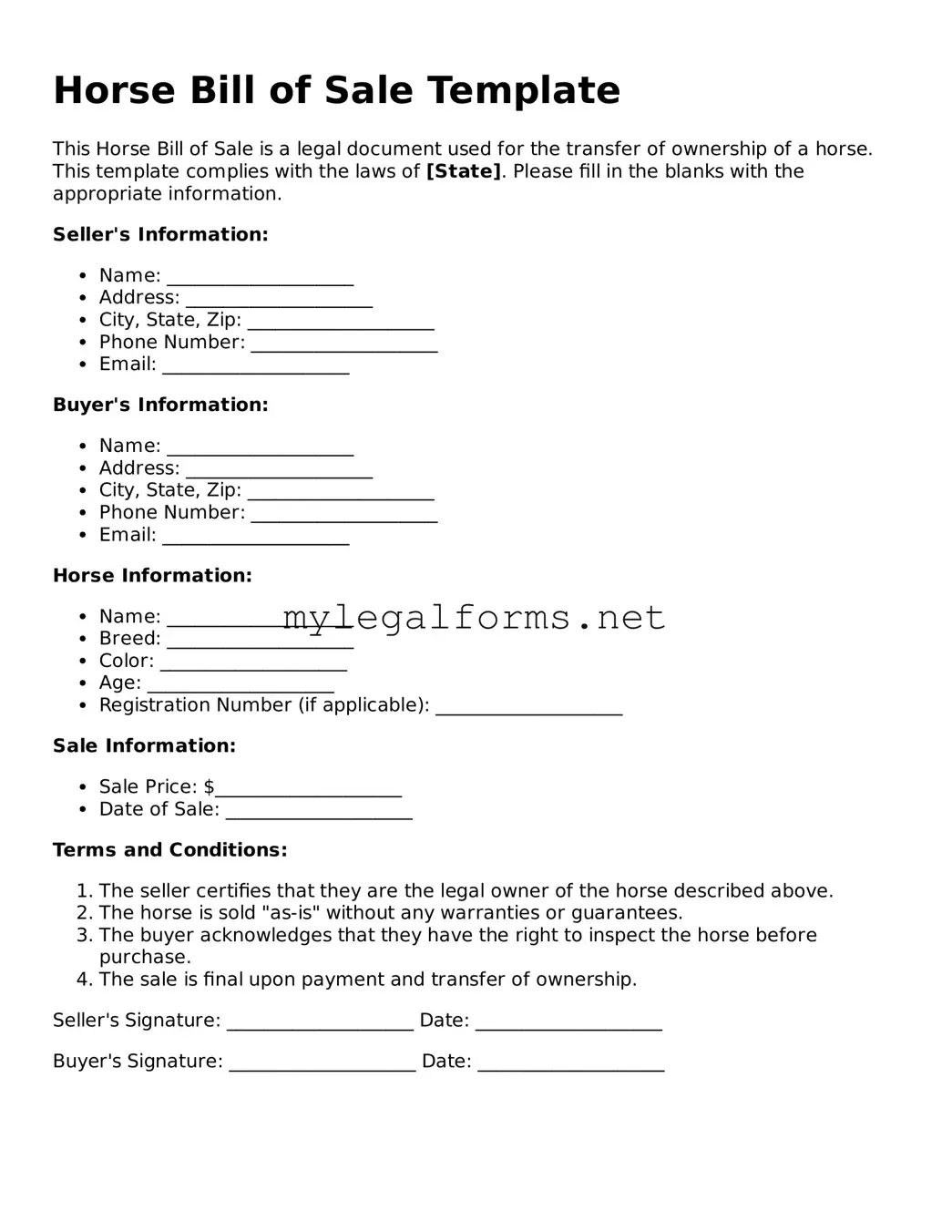When engaging in the sale or purchase of a horse, a Horse Bill of Sale form serves as an essential document that protects both the buyer and the seller. This form outlines critical information about the transaction, including details about the horse, such as its breed, age, color, and any unique identifying marks. Additionally, it specifies the sale price and the terms of payment, ensuring clarity and mutual understanding between the parties involved. The document often includes a warranty clause, which may affirm that the seller has the legal right to sell the horse and that the horse is free of any liens or encumbrances. Furthermore, the Horse Bill of Sale may also address any health guarantees or disclosures regarding the horse’s medical history, which can be particularly important for buyers concerned about potential future expenses. By formalizing the transaction in writing, the Horse Bill of Sale not only provides legal protection but also fosters trust between the parties, making it a vital component of equine transactions.
